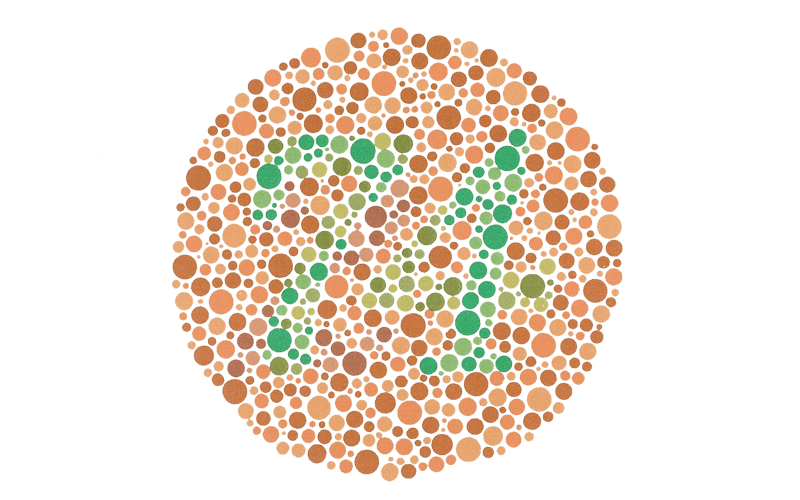
03 Jul Colour Blindness
Colour blindness means inability to see colours in a normal way. Most commonly there is difficulty to distinguish between greens and reds and occasionally blues.
In the retina there are three types of cone cells that see colour: red, green and blue. Colour blindness can occur when one or more of the colour cone cells are absent or abnormal. It is severe when all the three cone cells are absent, and mild occurs when only one cone cell functions abnormally.
Many people have such mild symptoms that they are unaware that they have a colour deficiency. Except in the most severe form, colour blindness does not affect the sharpness of vision.
Colour blindness is usually present since birth and men are at much higher risk than women. It affects both eyes equally and remains stable throughout life.
Certain diseases, like glaucoma, macular degeneration, Alzheimer’s disease, Parkinson’s disease, chronic alcoholism, leukemia and sickle cell anemia, may increase the risk for acquired colour deficiency.
Certain drugs like hydroxychloroquine (used to treat rheumatoid arthritis) can also cause colour blindness.
Diagnosis and Treatment
There is a simple test with charts showing patterns made up of multi-coloured dots. A normal person will be able to see numbers or shapes among the dots. A colour blind person will have a hard time finding the number or shape or may not see anything in the pattern at all.
There is no treatment for colour blindness that is present since birth. Special contact lenses and glasses may help in telling the difference between similar colours.
Acquired forms of colour blindness may be treated by addressing the underlying condition or drug that caused the problem.


Sorry, the comment form is closed at this time.